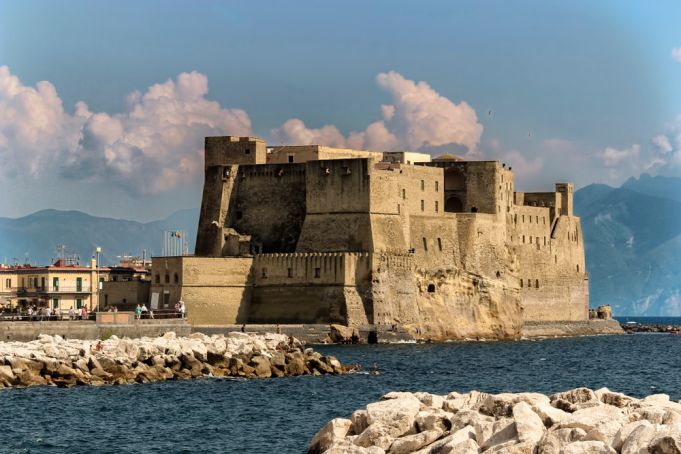Why tourists skip Naples: debunking common misconceptions
Though it is one of the biggest cities in the country, Naples is often thought of as the “messy brother” or “crazy uncle” of Italian cities, the one that doesn’t quite fit in, and certainly doesn’t try to.
Located under the shadow of Mt. Vesuvius, only a few kilometers north of the picturesque Amalfi Coast and a short train ride away from the historic sites of Pompeii and Herculaneum, Naples is one Italian city that falls off the beaten tourist path for many foreigners.
For those willing to get to know it, Naples is one of the liveliest, most culturally rich cities Italy has to offer. In order to do this, one must understand the truth behind the common misconceptions that deter most tourists.
Is Naples dangerous due to the Mafia presence?
Though Naples has its fair share of pickpockets and petty thieves, for tourists and visitors, it is no more dangerous than most big cities. The presence of the Camorra, the regional Campania mafia, impacts Naples on a systemic and economic level, but its effects are barely noticeable within the atmosphere of the central areas of the city. For tourists, Naples is as safe as any Italian city.
One reason this misconception still remains relevant is Naples’ history with the Camorra. Until the early 2010s, the Camorra played a large role in Neapolitan daily life. For example, the trash crisis, caused by the Camorra’s infiltration of the waste business, lasted from the 1990s to the 2010s. The crisis resulted in trash build up and sporadic trash dumping in the city streets. Not only did this impact the health and safety of the Neapolitan people, it gave Naples a reputation of being dirty and generally unpleasant. The city was left with a dwindling tourism industry.
The government took a stand against the Camorra in 2012, and though this mob is still active behind the scenes, the atmosphere of Naples has steadily improved. Occasional trash pile build-ups still occur within the city, but tourists need not worry--they are generally caused by worker strikes.
As of 2020, Naples ranks #95 on Numbeo’s World Crime Index by City (ranked most to least dangerous), not far from Rome at #110. That being said, tourists should take precautions to mind their possessions and be wary of being ripped off by tourist scams, as in any tourist destination.
Is Naples not as rich in history as other Italian cities?

Castel dell'Ovo
While no city can compare to the historical-richness of Rome, Naples is certainly not lacking in its share of historical sites to see.
Known as the “Paris of the south” before Italy’s unification, Naples has always been a symbol of active city life. This can be experienced wandering down Spaccanapoli, the long, narrow street that divides Naples’ Historic Centre in half.
Along this streer, tourists can get a first-hand sense of what it was like to live in ancient Rome, as Naples boasts the “most intact Roman street plan,” according to the Smithsonian.
Castel dell’Ovo, located along the seaside of Naples, was built in the 12th century and remains intact and free to the public.
Also read:
Naples is dotted with countless other historical sites: Underground Naples, an underground slice of preserved ancient Greek and Roman life, the tomb of the poet Virgil, Teatro di San Carlo, Museo di Capodimonte, and of course, the National Archaeological Museum. For history buffs traveling to Italy, Naples is a worthy destination.
Is Naples full of reckless drivers?
To outsiders, driving culture in Naples seems completely reckless and unsafe. Cars and scooters drive quickly, swerving around each other to get where they are going, and suddenly slamming to a halt when they need to in a fashion that has earned Naples the title “the Bangkok of Italy” from many overwhelmed tourists.
For this reason, visiting the city is much more relaxing when one plans to get around by foot or with public transportation instead of renting a car.
However, a common tourist misconception is that, because driving culture is “crazy,” tourists are at risk of being hit by cars or scooters. In truth, tourists have an extremely low chance of being hit by a car or scooter in Naples. Drivers are used to stopping quickly, so they will do so if someone is crossing the street.
The best thing for a tourist to do when crossing the street is move confidently and quickly, and, if in doubt, follow Neapolitans.
Do you need to go to Naples for authentic Neapolitan-style pizza?

Naples is where pizza was born, and though it has since blossomed into a food art-form all over the world, nothing compares to the original--literally.
The Associazione Verace Pizza Napoletana (AVPN) is a legal food quality organization that, in 1984, presented strict guidelines of how a pizza must be made in order to be truly Neapolitan.
The AVPN guidelines include specific ingredients, ingredient amounts, and formulaic cooking instructions. As for the final result, a Neapolitan pizza must be soft and fragrant, with a puffy outer-crust, and topped with fresh basil. The process of making the authentic crust is complex and time-consuming, which is why, when a pizzeria obtains an AVPN certification, it is regarded as a stamp of quality excellence.
The majority of AVPN-certified restaurants are located in Naples. Despite this, many uncertified restaurants all over Italy sell “Neapolitan-style pizza,” and use the term to describe any pizza with a puffy crust. Not only does this mislead tourists, it cheats them out of wanting to experience authentic Neapolitan pizza because they believe they already have. As specified by the AVPN guidelines, the best Neapolitan pizzas are those with fresh ingredients sourced from the Campania region. Contrary to the common misconception, if tourists want to eat the best pizza in the world, they must go to Naples.
Is Naples not a tourist-friendly city?
To unprepared outsiders, Naples comes across as rough and unruly. While many Italian cities such as Rome, Florence, and Venice have areas that specifically cater to tourists, with English spoken on the streets as prevalently as Italian and international dishes on restaurant menus, Naples does not.
Naples is strictly Neapolitan, and has no intention of changing. The misconception is that, because of this, tourists are unwelcome--when in fact, Neapolitans are known for being exceedingly friendly and generous. Tourists who visit Naples with the intention of being immersed in the culture will have a much better time than those who expect a traditional tourism experience. Additionally, while many Neapolitans speak English (especially in the central areas of the city), it is not as commonly spoken as it is in other, more popular tourist destination cities. For non-Italian speaking tourists, learning a few key words and phrases for making purchases, eating in restaurants, and getting directions can greatly improve one’s experience in Naples.
Common misconceptions about Naples give tourists a bad impression of the city, often convincing them to leave it off their itineraries. In reality, it is a vibrant city full of cultural, historical, and culinary experiences awaiting those willing to get to know it.

















